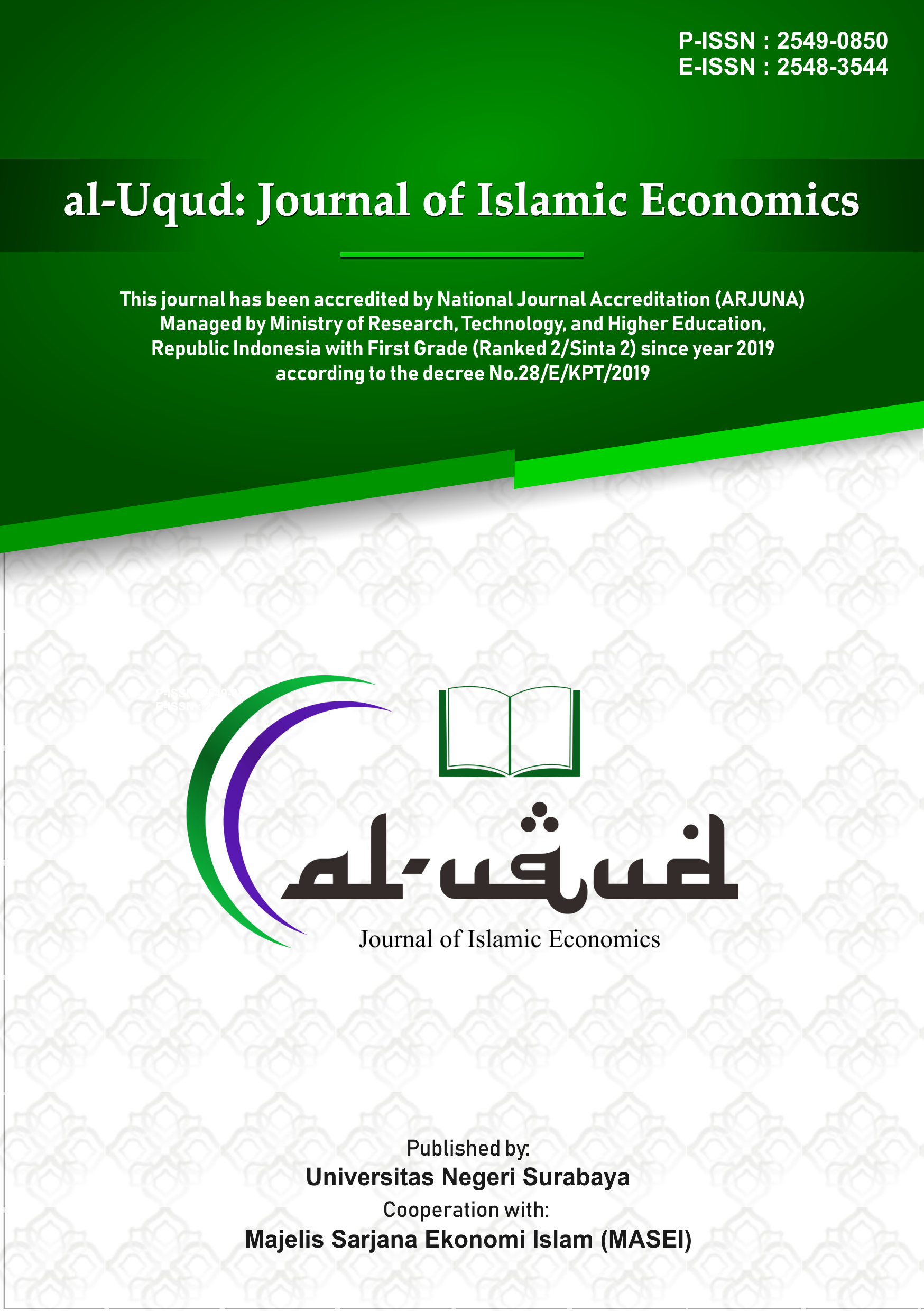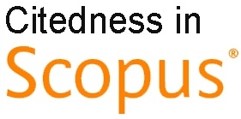The determinants of cash waqf re-endow intention in Malaysia
DOI:
https://doi.org/10.26740/aluqud.v7n1.p126-137Keywords:
Cash waqf, Familiarity, Intention to endow , Perceived efficacy, TrustAbstract
Cash waqf has significant potential to improve Muslims' economies, particularly in financing social and cultural activities. Most governments today are experiencing financial difficulties, with inadequate means to cover public needs and ensure that all residents are in good standing. Thus, this paper discusses internal factors such as trust, familiarity, and perceived efficacy as possible factors influencing cash waqf endowers' intention to reendow. The population for this study is 13,940 cash waqf donors in the Klang Valley, which covers Selangor and Kuala Lumpur, and a purposive sampling method was used. Based on the finding gathered using PLS analysis on 382 respondents indicated that internal factors (trust, familiarity, perceived efficacy) positively influence intention to reendow among cash waqf endowers. Trust is the most dominant factor that influences the intention to reendow. It may indicate that the higher the trust level a person has, the higher the intention to reendow. These study suggestions are other variables influencing the intention to reendow and should be explored further. Moreover, this study offers management implications, such as empirically proven conclusions on internal factors (trust, familiarity, perceived efficacy) that influence endowers' intention to reendow to waqf organisations.
References
Aaker, D. A. (1996). Measuring brand equity across products and markets. California management review, 38(3), 1-10. http://dx.doi.org/10.2307/41165845
Aziz, M. R. A., Johari, F., & Yusof, M. A. (2013). Cash waqf models for financing in education. In The 5th Islamic Economic System Conference (iECONS2013), 835-842.
Sargeant, A. (2013). Donor Retention: What Do We Know & What Can We Do about It? Nonprofit Quarterly. 12-23.
Ali, N. A., & Markom, R. (2020). The challenges in implementing cash waqf in Malaysia. Journal of Contempory Islamic Studies, 6(2), 13-23.
Anuar, A. S., Bahari, Z., Doktoralina, C. M., Indriawati, F., & Nugroho, L. (2019). The Diversity of Waqf Implementations for Economic Development in Higher Education. IKONOMIKA, 4(1), 13-34. https://doi.org/10.24042/febi.v4i1.3808
Barney, J. B., & Hansen, M. H. (1994). Trustworthiness as a source of competitive advantage. Strategic management journal, 15(S1), 175-190. https://doi.org/10.1002/smj.4250150912
Bekkers, R., & Wiepking, P. (2011). A literature review of empirical studies of philanthropy: Eight mechanisms that drive charitable giving. Nonprofit and voluntary sector quarterly, 40(5), 924-973. https://doi.org/10.1177/0899764010380927
Duncan, B. (2004). A theory of impact philanthropy. Journal of Public Economics, 88, 2159-2180.
Faircloth, J. B. (2005). Factors influencing nonprofit resource provider support decisions: applying the brand equity concept to nonprofits. Journal of marketing theory and practice, 13(3), 1-15. https://doi.org/10.1080/10696679.2005.11658546
Farhanah, M. M., Emira M. S. & Dzuljastri A. R. (2015). Operation of cash waqf in Malaysia and its limitations. Journal of Islamic Economics, Banking and Finance, 11(4), 100-114. http://doi.org/10.12816/0024792
Fauzi, M., Yahya, S., Hanaysha, J. R., Haron, M. S., & Zahrin, S. (2019). The impact of trust in cash waqf contribution: a case study of wakaf Selangor muamalat (WSM) service of bank Muamalat Malaysia Berhad (BMMB). International Journal of Business, Economics and Law, 18(2), 1-10.
Fraering, M., & Minor, M. S. (2006). Virtual Community in Financial Institutions: Development of The Virtcomm Scale. Marketing Management Journal, 16(2), 13-32.
Gaskin, K. (1999). Blurred vision: Public trust in charities. International Journal of Nonprofit and Voluntary Sector Marketing, 4(2), 163-178. https://doi.org/10.1002/nvsm.66
Gounaris, S. P. (2005). Trust and commitment influences on customer retention: insights from business-to-business services. Journal of Business research, 58(2), 126-140. https://doi.org/10.1016/S0148-2963(03)00122-X
Hair Jr, J. F., Sarstedt, M., Ringle, C. M., & Gudergan, S. P. (2017). Advanced issues in partial least squares structural equation modeling. saGe publications.
Hoch, S. J., & Deighton, J. (1989). Managing What Consumers Learn from Experience. Journal of Marketing, 53(2), 1-14. https://doi.org/10.1177/002224298905300201
Hoeffler, S., & Keller, K. L. (2002). Building brand equity through corporate societal marketing. Journal of Public Policy & Marketing, 21(1), 78-89. https://doi.org/10.1509/jppm.21.1.78.17600
Ismail, W. M. W. (2021). Significance of Technology to Cash Waqf Collection: Application of Unified Theory Acceptance and Use of Technology (UTAUT). International Journal of Academic Research in Business and Social Sciences, 11(1), 777-788. http://dx.doi.org/10.6007/IJARBSS/v11-i1/8994
Haron, M., Kamarudin, M. K., Fauzi, N. A., Ariff, M. M., & Zainuddin, M. Z. (2016). Cash waqf collection: Any potential factors to influence it. International Journal of Business, Economics and Law, 9(2), 27-33.
Khan, A., Mohd. Shafiai, M.H., Shaique, M. and Khan, S. (2022). Demographic determinants of charity donors and its implication for cash waqf institutions in Malaysia. Journal of Islamic Marketing, 13(2), 508-525. https://doi.org/10.1108/JIMA-10-2019-0211
Nathan, A., & Hallam, L. (2009). A qualitative investigation into the donor lapsing experience. International Journal of Nonprofit and Voluntary Sector Marketing, 14(4), 317-331. https://doi.org/10.1002/nvsm.378
Pharoah, C., & Mckenzie, T. (2013). Giving back to communities of residence and of origin: An analysis of remittances andcharitable donations in the UK. UK. London: Alliance Publishing Trust.
Sekaran, U., Bougie, R. 2009. Research Methods for Business: A Skill Building Approach. 5th Edition. Wiley, United Kingdom.
Singh, S., & Duque, L. C. (2019). Familiarity and format: cause-related marketing promotions in international markets. International Marketing Review, 2(2), 1-15. https://doi.org/10.1108/IMR-10-2018-0307
Snip, B. (2011). Factors Influencing The Intention To Donate To Charity Organizations: Importance of Trust. Unpublish thesis University of Twente, Netherland.
Wisdom J. & Creswell J. W. (2013). Mixed methods: Integrating quantitative and qualitative data collection and analysis while studying patient-centered medical home models. Agency for Healthcare Research and Quality, Rockville MD
Zdravkovic, S., Magnusson, P., & Stanley, S. M. (2010). Dimensions of fit between a brand and a social cause and their influence on attitudes. International Journal of Research in Marketing, 27(2), 151-160. https://doi.org/10.1016/j.ijresmar.2010.01.005
Downloads
Published
How to Cite
Issue
Section
License
Copyright (c) 2023 The author(s)

This work is licensed under a Creative Commons Attribution 4.0 International License.
CC BY 4.0 Abstract views: 774
,
Abstract views: 774
, PDF Downloads: 559
PDF Downloads: 559








